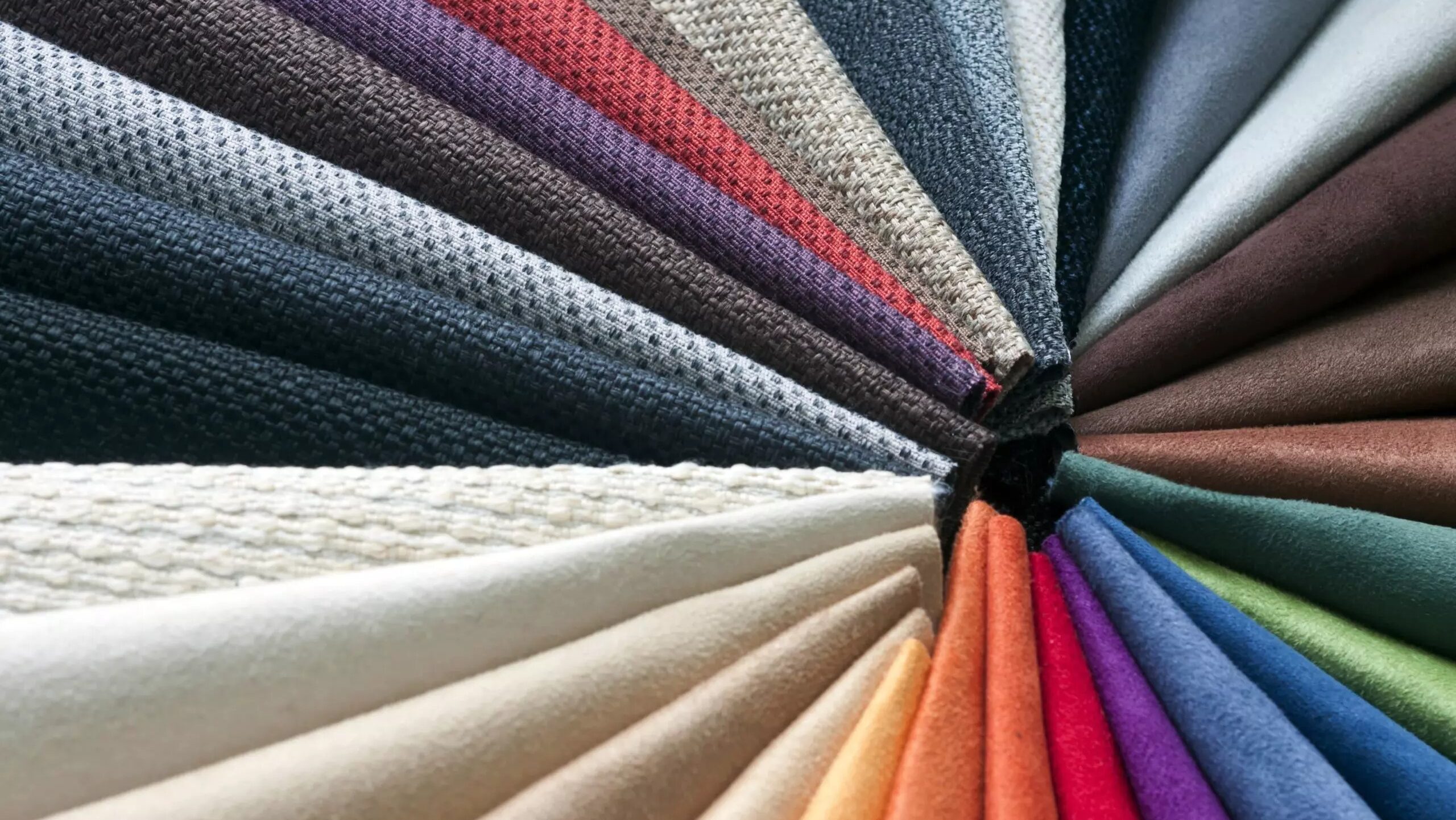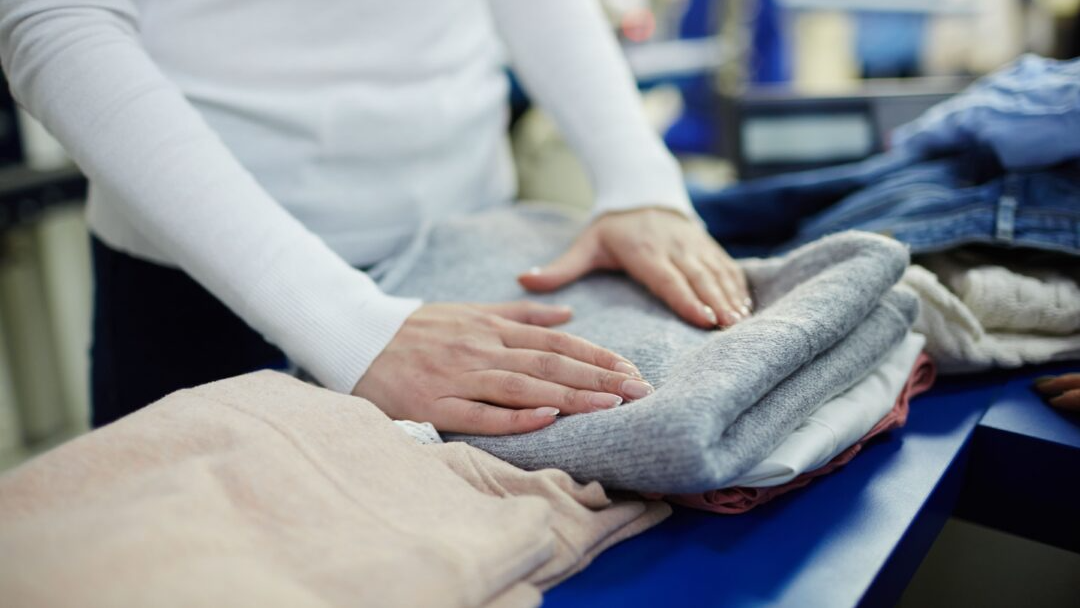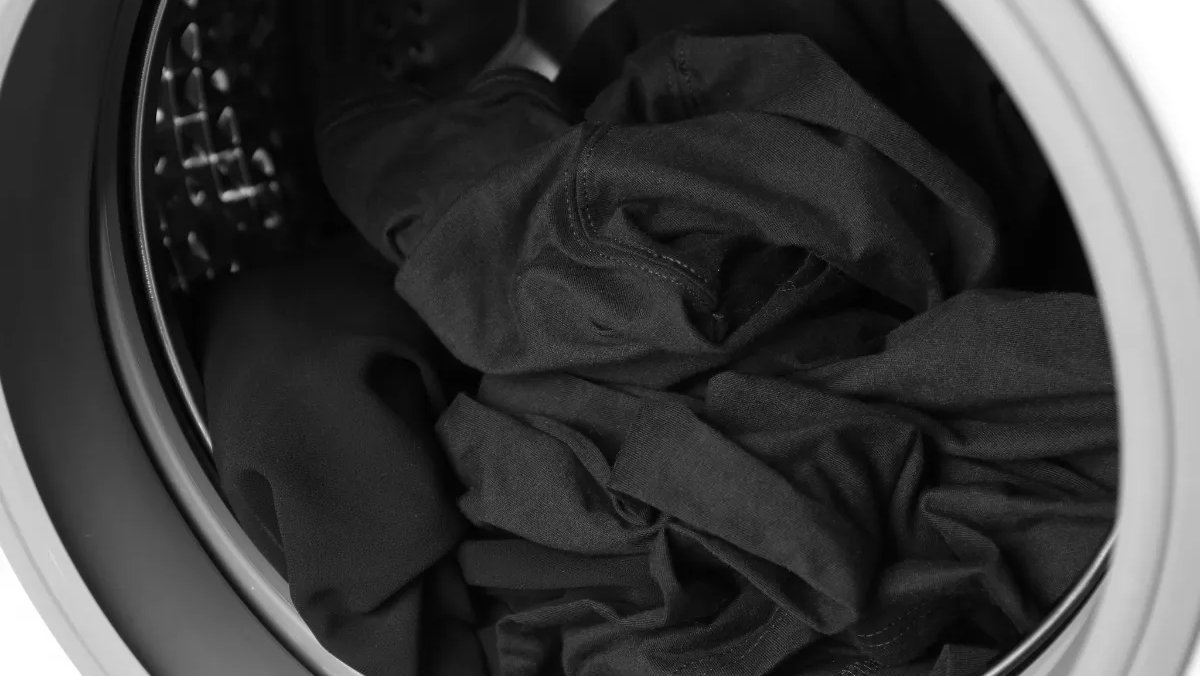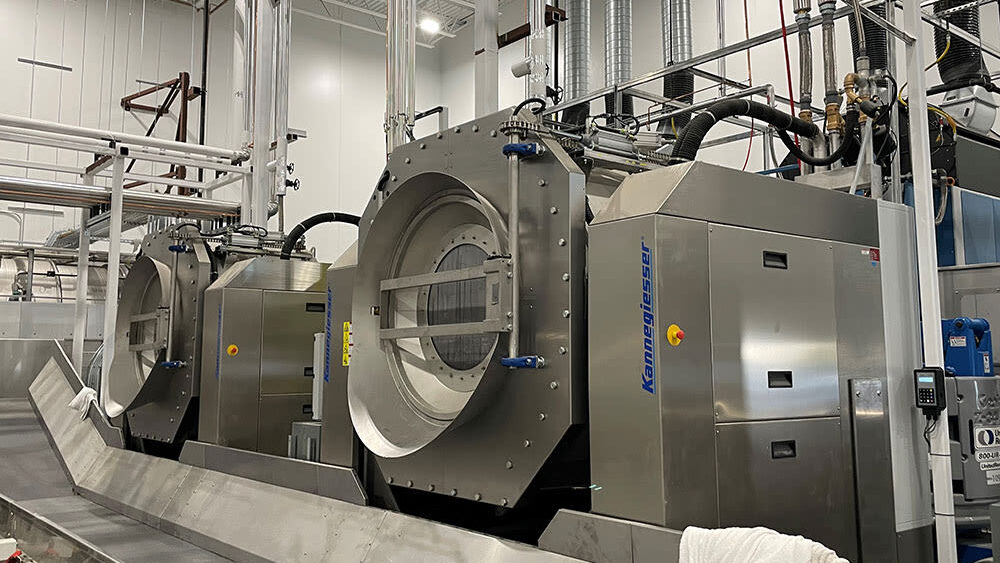Each type of fabric has its own characteristics in terms of durability, absorbency, elasticity and different maintenance requirements. If not washed properly, the fabric can easily fade, pill, deform or reduce its lifespan. In the industrial laundry service industry, understanding how to care for each type of fabric is an important factor to ensure quality for partners.
In this article, Green Laundry will share the 7 most popular types of fabric and guide you on how to wash them properly to maintain their beauty and long-term durability.
1. Popular Fabric Types Today
1.1. Cotton
1.1.1. Characteristics:
Cotton is a natural fabric woven from cotton plant fibers, offering softness, breathability, easy dyeing, and dust resistance. With excellent sweat absorption, it is widely used in clothing, bed sheets, and towels. However, this fabric has the disadvantage of shrinking or deforming after multiple washes, especially if not washed properly.

1.1.2. Proper washing method:
- Prefer washing with cold or warm water below 40°C to maintain fabric form.
- Avoid drying directly under harsh sunlight, as high temperatures may cause fading and stiffness.
- Can be machine-washed in industrial washers, but select gentle cycles to protect fibers.
In industrial laundry processes, cotton is sorted and treated separately with specialized chemicals to retain softness, color fastness, and extend product lifespan
1.2. Silk
1.2.1. Characteristics:
Silk is woven from natural fibers, and the finest type is made from mulberry silk. It is one of the most luxurious fabrics, known for its smooth, glossy surface that provides elegance and comfort. However, silk is delicate, as it wrinkles easily and is very sensitive to strong detergents. Without proper care, it quickly loses its natural luster and quality.

1.2.2. Proper washing method:
- Prefer hand washing with cold water and mild detergent; avoid alkaline detergents or bleach.
- Do not twist or wring; instead, gently press water out.
- When ironing, use low heat and place a thin cloth on top to protect the silk’s surface.
In industrial laundry services, silk is always handled separately with specialized machines. This process preserves its elegance while minimizing damage.
1.3. Wool
1.3.1. Characteristics:
Wool is made from natural fibers sourced from animal hair such as sheep, goats, rabbits, or camels. Known for insulation, durability, and warmth retention, wool is widely used in clothing and bedding.
Wool garments are popular for coats, scarves, and blankets. However, wool is difficult to maintain—it easily pills, shrinks, or loses shape if washed incorrectly. It is also sensitive to high temperatures.

1.3.2. Proper washing method:
- Hand wash with cold water using detergents specifically for wool.
- Avoid wringing or twisting to prevent fiber distortion.
- Dry flat on a surface instead of hanging to avoid stretching.
In industrial laundry, wool is washed with special settings to reduce pilling, while preserving softness, warmth, and durability.
1.4. Polyester
1.4.1. Characteristics:
Polyester is a synthetic fiber known for durability, wrinkle resistance, and quick drying, making it suitable for various clothing and household items. However, compared to cotton, polyester has lower sweat absorption and may feel uncomfortable in hot weather. Still, it is widely favored for its strength and color retention.
 There are 4 basic polyester fiber types: staple, tow, fiberfill, and filament.
There are 4 basic polyester fiber types: staple, tow, fiberfill, and filament.1.4.2. Proper washing method:
- Machine washable on normal cycles.
- Avoid hot water, which may deform fibers.
- Do not tumble dry at high heat; instead, air-dry or use gentle drying.
In industrial laundry, polyester is ideal for uniforms, curtains, and tablecloths due to its durability and ease of cleaning—suitable for large-volume orders.
1.5. Satin
1.5.1. Characteristics:
Satin is the name of the weaving technique that helps the woven fiber structure become tight, thanks to the process of weaving the weft and warp fibers together, creating a shiny surface on one side and a matte surface on the other side. In the past, satin fabric was made from silk and cotton fibers. Nowadays, people have started using synthetic fibers such as polyester and viscose fibers… to weave satin fabric.
Because of the weaving technique, satin fabric has a smooth, soft surface and brings a luxurious feeling. Depending on the woven fibers, satin fabric is often used in different products from high-end to ordinary such as bed sheets, nightgowns, evening dresses or party dresses. However, satin is difficult to preserve because it is easily scratched and loses its natural shine if not washed properly. This characteristic requires satin to be carefully cared for to maintain its beauty and durability over time.

1.5.2. Proper washing method:
- Wash with cold water and mild detergent; avoid strong chemicals.
- Wash separately from rough fabrics to prevent abrasion.
- Air-dry in shade to prevent fading or stiffness.
In industrial laundry, satin is always treated separately with gentle cycles to maintain shine and softness, meeting the high standards of premium clients.
1.6. Denim
1.6.1. Characteristics:
Denim is a fabric woven firmly in a twill weave of 100% cotton. Denim is thick and very durable, often used in the production of workwear, casual uniforms or fashion products that require strength. However, denim has the disadvantage of fading easily after many washes, especially if washed incorrectly. Therefore, denim preservation always requires care to maintain color and durability over time.

1.6.2. Proper washing method:
- Wash with cold water to reduce fading.
- Turn garments inside out before washing to protect the outer color.
- Avoid strong detergents that cause quick fading.
- Do not tumble dry on high heat to prevent shrinking and stiffness.
In industrial laundry, denim is washed separately to avoid color bleeding and maintain shape while ensuring comfort.
1.7. Linen
1.7.1. Characteristics:
Linen is a natural fabric made from flax, known for its light, breathable, and moisture-absorbing properties, very suitable for hot and humid climates like Vietnam. Linen often brings a cool, comfortable feeling to the wearer, so it is widely used in summer clothes, bed sheets, and tablecloths. However, the disadvantage of linen is that it wrinkles easily and shrinks easily after many washes if not treated properly.

1.7.2. Proper washing method:
- Wash with cold or lukewarm water to protect fibers.
- Do not wring strongly; air-dry naturally.
- Iron while slightly damp for easier flattening and less damage.
In industrial laundry, linen is treated with modern ironing machines, keeping it smooth and soft without harming fibers.
2. Comparison: hand washing vs. industrial laundry for each fabric
| Fabric | Hand Washing | Industrial Laundry |
| Cotton | Soak with regular detergent, rub gently, avoid strong wringing; may fade in the sun. | Use industrial washers with neutral detergent, control temperature and spin to preserve color and softness. |
| Silk | Hand wash with shampoo or mild soap, avoid soaking for long, dry in shade. | Use specialized chemicals for delicate fabrics, a gentle wash, low temperature to retain sheen. |
| Wool | Hand wash with cold water and mild shampoo, avoid wringing; prone to shrinking. | Industrial wool setting with specialized detergents, gentle drying to maintain form and reduce pilling. |
| Polyester | Washable with regular detergent, wrinkle-resistant but may retain odors. | Industrial wash with deodorizing chemicals and antibacterial drying for freshness and quick drying. |
| Satin | Hand wash with cold water, avoid rubbing; loses sheen in sunlight. | Wash separately with mild detergent, controlled temperature to maintain smooth gloss. |
| Denim | Hand/machine wash, turn inside out, avoid long soaking; fades easily. | Wash separately in industrial machines, use anti-fade detergents to preserve color and firmness. |
| Linen | Hand wash or gentle machine wash, wrinkles easily, requires ironing. | Industrial wash with fiber-protecting chemicals, combined with industrial ironing for natural smoothness. |
3. Why choose Green Laundry for different fabrics?
- Many years of experience in industrial laundry services.
- Modern industrial machines with specific cycles for each fabric type.
- Safe, internationally certified chemicals that protect fabric fibers.
- Strict 9-step closed process with quality control.
- Fast service, cost-effective, suitable for various partners.
Each fabric has its own characteristics and washing methods. Without proper knowledge, fabrics can be damaged, reducing quality and lifespan. Therefore, choosing a professional industrial laundry service like Green Laundry ensures effective cleaning, fabric durability, and time savings.
Green Laundry – the leading company in providing quality and professional laundry solutions in Vietnam
Email: greenlaundry@giatuixanh.com
Phone: 028 36 222 180
Fanpage: Giặt Ủi Xanh – Chuyên Giặt Ủi Công Nghiệp
Address: Lot A57/II-Lot 58/II, Road No. 2D, Vinh Loc Industrial Park, Binh Tan Ward, Ho Chi Minh City.






